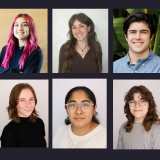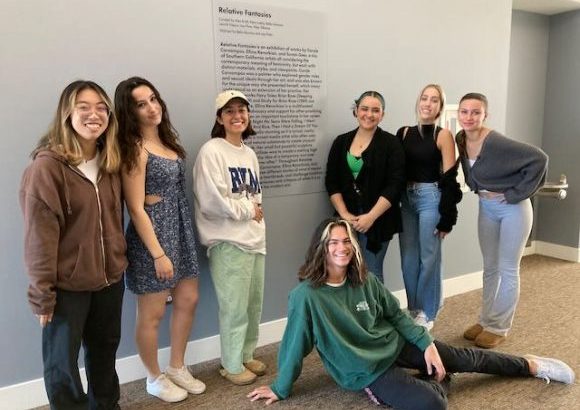
Unveiling the Escalette Collection: The Story Behind Chapman University’s Iconic ‘Museum Without Walls’ and its Impact on Campus Art
March 6, 2025
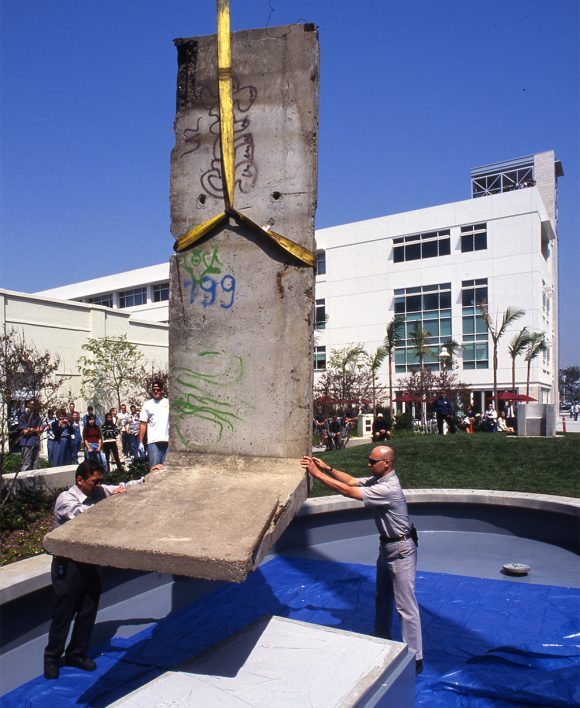
Installation of a section of the Berlin Wall in the Liberty Plaza in 1997.
You may be familiar with the Escalette Collection of Art in Wilkinson College of Arts, Humanities, and Social Sciences, Chapman University’s “museum without walls,” but have you ever wondered how it began and how contemporary art came to be displayed throughout campus? The history of the Escalette Collection is intertwined with the development of the university’s art program and the transformation of public art on campus.
The story begins with Richard Turner, Professor Emeritus, who played a pivotal role in fostering the arts at Chapman. In 1972, he founded the Guggenheim Gallery, which still exists today, and served as its Director. Over his tenure from 1975 to 2011, Turner curated more than seventy exhibitions and was instrumental in the creation of several iconic public artworks on campus, including Liberty Plaza, which houses a section of the Berlin Wall (1997), and Equinox Sunrise (2004) in the Fish Interfaith Center.
The initiative to incorporate art into Chapman’s campus was further advanced by Bret Price, who taught sculpture in the Art Department. In 1984, he and then-President G.T. Smith launched a sculpture acquisition program, overseeing the installation of several large-scale outdoor sculptures throughout campus. Many outdoor sculptures you see on campus today, such as Obid by Obid by Roslyn Mazzilli and Lightwave by Jerome Kirk, were acquired through this program.
During the 1990s
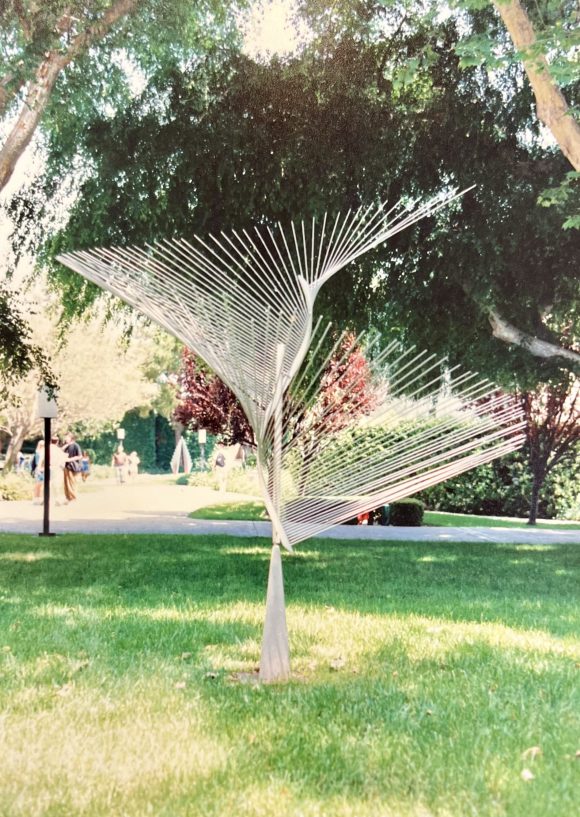
Lightwave by Jerome Kirk in its original installation location outside Wilkinson Hall. This sculpture is now on display outside the Hashinger Science Center. Obid by Roslyn Mazzilli is just visible in the background.
Maggi Owens joined the Guggenheim Gallery as a volunteer in 1991. After earning her MA in Exhibition Design and Museum Studies from Cal State Fullerton in 1997, she became co-director and co-curator. In this role, Owens curated thought-provoking exhibitions that explored themes of race, religion, gender politics, and social justice. One notable exhibition, Waiting Room (2000), featured an interactive installation by San Francisco artist Richard Kamler that examined the impact of the death penalty.
As Owens and Turner continued curating exhibitions for the Guggenheim Gallery, there was a growing push to expand the public art program. With campus construction booming—and the addition of the Fowler School of Law, Beckman Hall, and Argyros Forum—then-President James Doti and Provost Ham Shirvani advocated for more art throughout campus. As Shirvani explained, “The real intention is to promote art for students in different spaces and places… to expose students to as much art as possible.” In 1996, Owens was tasked with curating the newly built Henley Galleria, a hallway exhibition space still in use on the second floor of Argyros Forum.
By the 2000s
Eventually, Owens’ role expanded beyond the Guggenheim Gallery; she became the university’s first official Curator, responsible for establishing Chapman’s first permanent art collection. This collection incorporated existing public sculptures already on campus, but the goal was to acquire new work by emerging and established artists from Southern California. Leveraging her extensive network and modest funding, Owens brought significant pieces by renowned artists such as Robert Rauschenberg, Robert Herman, and Tony DeLap —some of the most influential figures in 20th-century art.
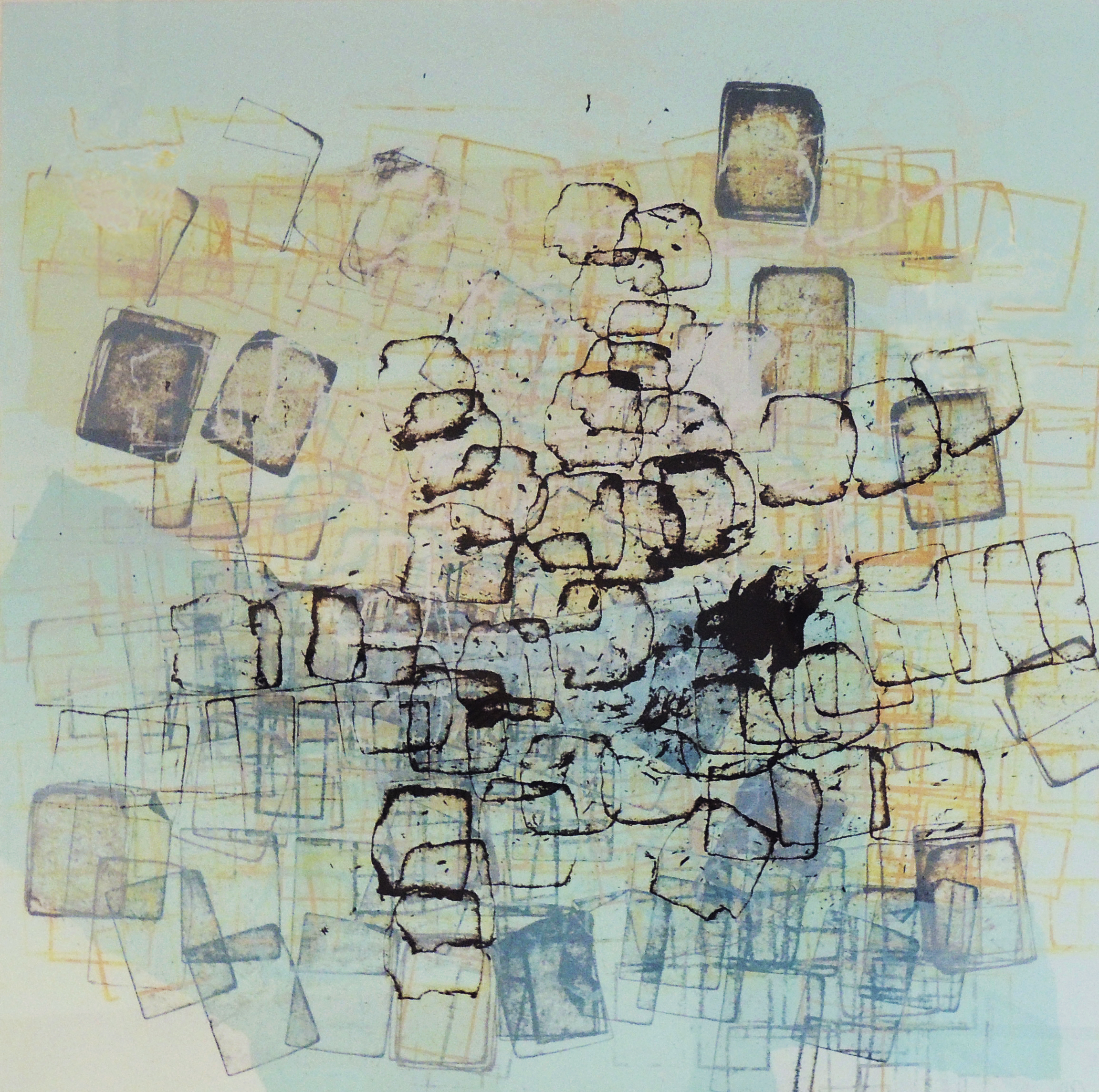
Untitled by Mark Bradford was one of many major works Maggi Owens brought to Chapman University. This work is currently on display in the Sandi Simon Center for Dance.
A turning point came in 2010 when Phyllis and Ross Escalette established an endowment to fund The Phyllis and Ross Escalette Permanent Art Collection. Ross Escalette, who served on Chapman’s Board of Governors, and his wife, Phyllis, were interested in supporting a project where their donation would have an immediate and visible impact. Owens’ vision of integrating art into the most public areas of campus aligned perfectly with their goals, and the permanent collection was re-named in their honor. With the Escalette Endowment’s support, the collection grew significantly, enabling more acquisitions and expanding public art across campus. This mission was supported by an energetic advisory board called The Friends of the Escalette Collection. The Escalette Collection and Guggenheim Gallery subsequently became separate entities, with the Escalette Collection focused on curating public art throughout campus and the Guggenheim Gallery focused on temporary exhibitions and student shows.
Over the Last Decade
The Escalette Collection has continued to expand, now displayed in nearly every building on the Orange campus as well as the Rinker Health Sciences campus in Irvine. In 2017, the collection was restructured under Wilkinson College of Arts, Humanities, and Social Sciences. As an academic unit within Wilkinson College, the Escalette Collection was able to re-prioritize its role in enhancing student and faculty research and learning experiences. Under the current Director, Fiona Shen, and Collections Manager, Jessica Bocinski, the Collection has narrowed and refined its collecting focus on contemporary Southern Californian artists, particularly those who are emerging or underrepresented. This initiative has been generously supported by Phyllis and Ross Escalette’s daughter, Suzanne Ellingson, and her family.
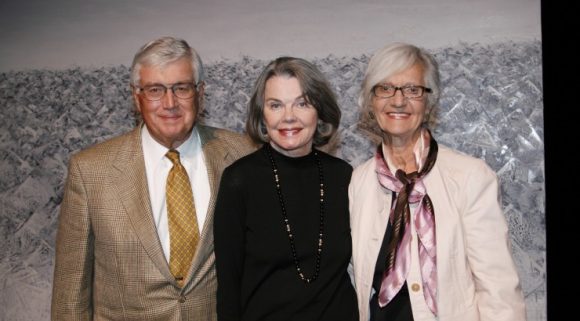
Maggi Owens with Ross and Phyllis Escalette.
At the Escalette Collection, we have carried on the legacies of those who came before us. Like Turner, Price, and Owens, we believe art should be a public resource that educates, inspires and fosters empathy. Owens’ commitment to curating art that engages with contemporary issues remains at the heart of our mission.
Today, students play an active role in the Escalette Collection’s operations. Beyond being exposed to art, they participate in its curation, acquisition, and exhibition through class projects, internships, student worker positions, and volunteer opportunities. In doing so, they gain hands-on experience in museum curation, research, and preservation. This involvement ensures that the Escalette Collection remains not only a resource for learning but also a dynamic, student-driven initiative that shapes the artistic identity of Chapman University.

